
Mass Ave and 23rd St, NW
Perhaps DC’s finest horse in action features – General Philip Sheridan at the reins:
“a career United States Army officer and a Union general in the American Civil War. His career was noted for his rapid rise to major general and his close association with Lt. Gen. Ulysses S. Grant, who transferred Sheridan from command of an infantry division in the Western Theater to lead the Cavalry Corps of the Army of the Potomac in the East. In 1864, he defeated Confederate forces in the Shenandoah Valley and his destruction of the economic infrastructure of the Valley, called “The Burning” by residents, was one of the first uses of scorched earth tactics in the war. In 1865, his cavalry pursued Gen. Robert E. Lee and was instrumental in forcing his surrender at Appomattox.
Sheridan fought in later years in the Indian Wars of the Great Plains. Both as a soldier and private citizen, he was instrumental in the development and protection of Yellowstone National Park. In 1883 Sheridan was appointed general-in-chief of the U.S. Army, and in 1888 he was promoted to the rank of General of the Army during the term of President Grover Cleveland.”
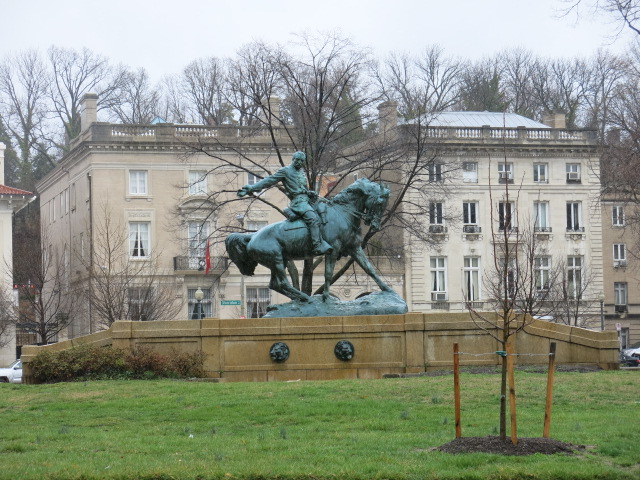


Conveniently located in Thomas Circle at the junction of Massachusetts Avenue, Vermont Avenue, 14th Street, and M Street, NW. George Henry Thomas:
“(July 31, 1816 – March 28, 1870) was a career United States Army officer and a Union General during the American Civil War, one of the principal commanders in the Western Theater.
Thomas had a successful record in the Civil War, but he failed to achieve the historical acclaim of some of his contemporaries, such as Ulysses S. Grant and William T. Sherman. He developed a reputation as a slow, deliberate general who shunned self-promotion and who turned down advancements in position when he did not think they were justified. After the war, he did not write memoirs to advance his legacy. He also had an uncomfortable personal relationship with Grant, which served him poorly as Grant advanced in rank and eventually to the presidency.”
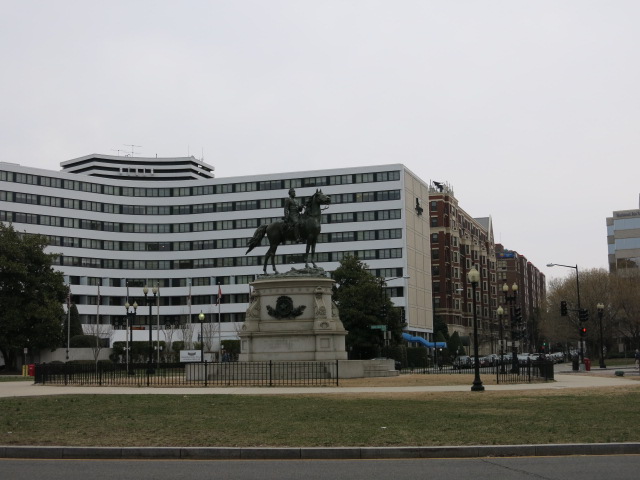
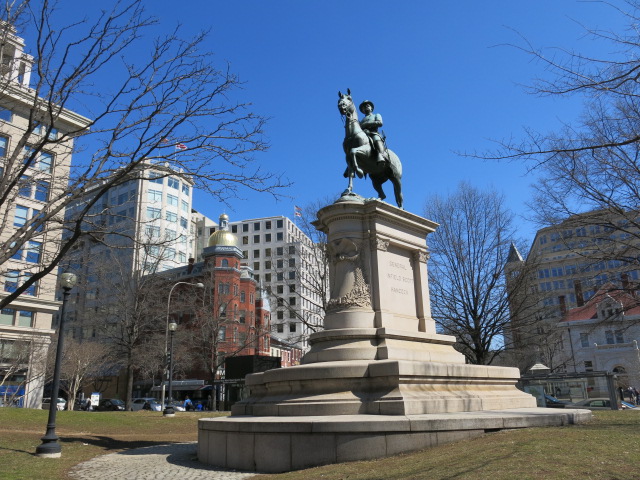
“Hancock the Superb” is located just outside the Navy Archives metro off Pennsylvania Ave and 7th St, NW.
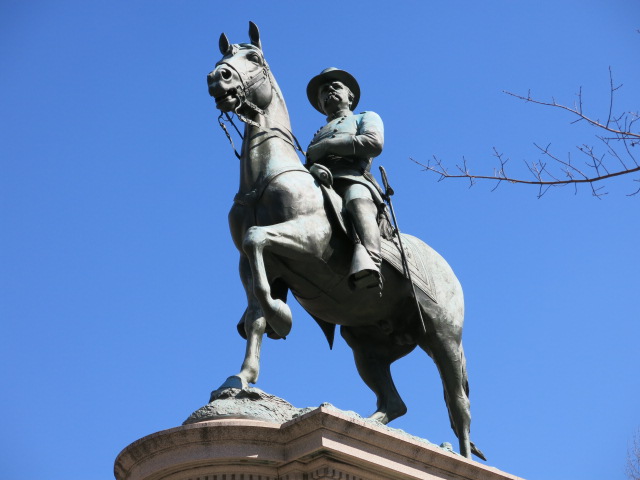
From Wikipedia:
Winfield Scott Hancock (February 14, 1824 – February 9, 1886) was a career U.S. Army officer and the Democratic nominee for President of the United States in 1880. He served with distinction in the Army for four decades, including service in the Mexican-American War and as a Union general in the American Civil War. Known to his Army colleagues as “Hancock the Superb”, he was noted in particular for his personal leadership at the Battle of Gettysburg in 1863. One military historian wrote, “No other Union general at Gettysburg dominated men by the sheer force of their presence more completely than Hancock.” As another wrote, “… his tactical skill had won him the quick admiration of adversaries who had come to know him as the ‘Thunderbolt of the Army of the Potomac’.” His military service continued after the Civil War, as Hancock participated in the military Reconstruction of the South and the Army’s presence at the Western frontier.
Hancock’s reputation as a war hero at Gettysburg, combined with his rare status as a prominent figure with impeccable Unionist credentials and pro-states’ rights views, made him a quadrennial presidential possibility in the years after the Civil War. His noted integrity was a counterpoint to the corruption of the era, for as President Rutherford B. Hayes said, “… [i]f, when we make up our estimate of a public man, conspicuous both as a soldier and in civil life, we are to think first and chiefly of his manhood, his integrity, his purity, his singleness of purpose, and his unselfish devotion to duty, we can truthfully say of Hancock that he was through and through pure gold.” This nationwide popularity led the Democrats to nominate him for President in 1880. Although he ran a strong campaign, Hancock was narrowly defeated by Republican James A. Garfield.

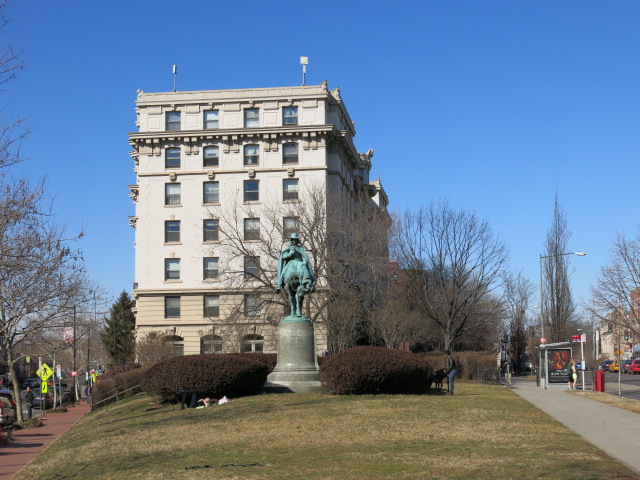
This week WaTPMoHatD checks out Francis Asbury located at the conversion of Adams Morgan/Mt. Pleasant/Columbia Heights between 16th and Mt. Pleasant St, NW. Francis Asbury, not to be confused with Asbury Francis Lever, was:
“one of the first two bishops of the Methodist Episcopal Church in the United States. As a young man in October 1771, the Englishman traveled to America and, during his 45 years there, he devoted his life to ministry, traveling on horseback and by carriage thousands of miles to those living on the frontier.
Asbury spread Methodism in America, as part of the Second Great Awakening. He also founded several schools during his lifetime, although his own formal education was limited. His journal is valuable to scholars for its account of frontier society.”
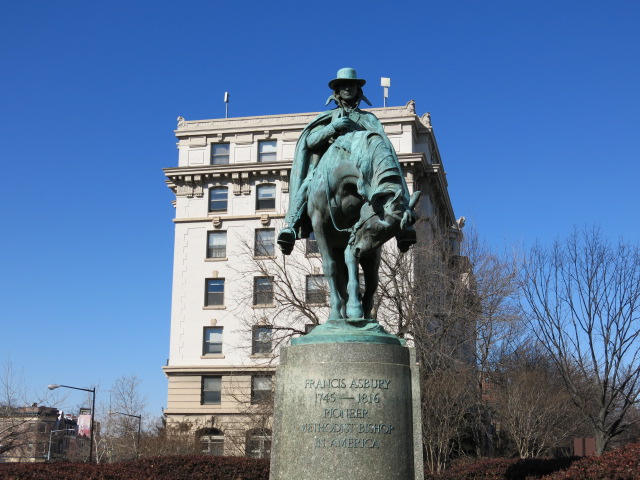
Interesting – one of the few non military honorees on horseback.
More info on this particular sculpture:
“The sculpture was founded by Roman Bronze Works in New York City. The piece was erected by the Francis Asbury Memorial Foundation and was approved by Congress on February 29, 1919. It was dedicated on October 15, 1924 and cost $50,000. On the proper left side of the sculpture, near the base, it is signed “Augustus Lukeman Sc 1921.”
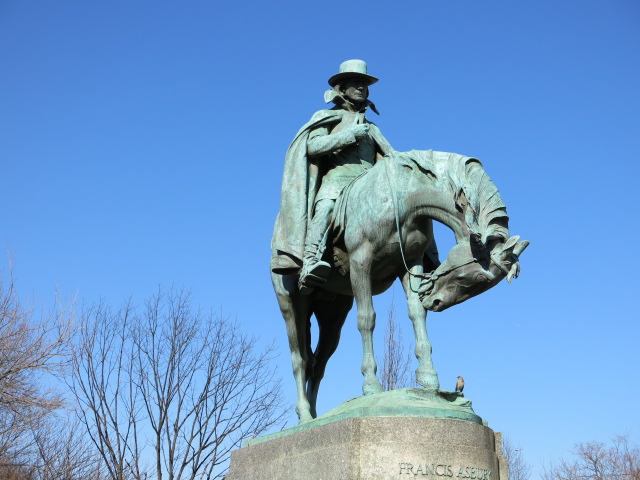
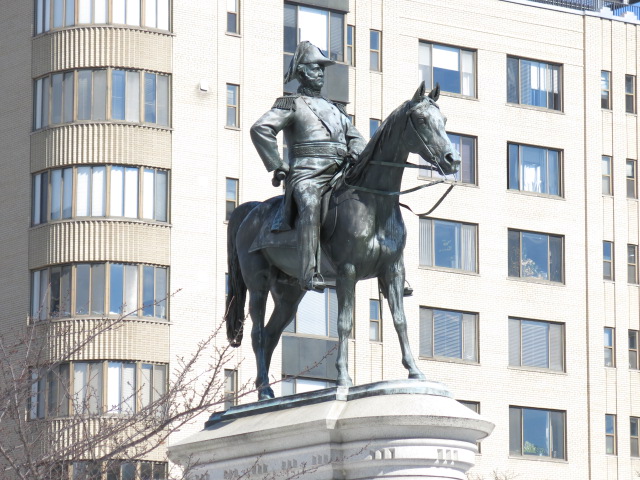
Ed. Note: I was going to have a post simply showing all of the statues with people on horseback around town but the contributor who was going to do it had to back out. So then I thought, ‘what the hell’, let’s see who these people are. And here we are.
For Vol. 1 let’s check out General Winfield Scott conveniently located in Scott Circle:
Known as “Old Fuss and Feathers” and the “Grand Old Man of the Army,” he served on active duty as a general longer than any other man in American history, and many historians rate him the best American commander of his time. Over the course of his 53-year career, he commanded forces in the War of 1812, the Black Hawk War, the Mexican-American War, the Second Seminole War, and, briefly, the American Civil War, conceiving the Union strategy known as the Anaconda Plan that would be used to defeat the Confederacy. He served as Commanding General of the United States Army for twenty years, longer than any other holder of the office.
A national hero after the Mexican-American War, he served as military governor of Mexico City. Such was his stature that, in 1852, the United States Whig Party passed over its own incumbent President of the United States, Millard Fillmore, to nominate Scott in that year’s United States presidential election. At a height of 6’5″, he remains the tallest man ever nominated by a major party. Scott lost to Democrat Franklin Pierce in the general election, but remained a popular national figure, receiving a brevet promotion in 1856 to the rank of lieutenant general, becoming the first American since George Washington to hold that rank.

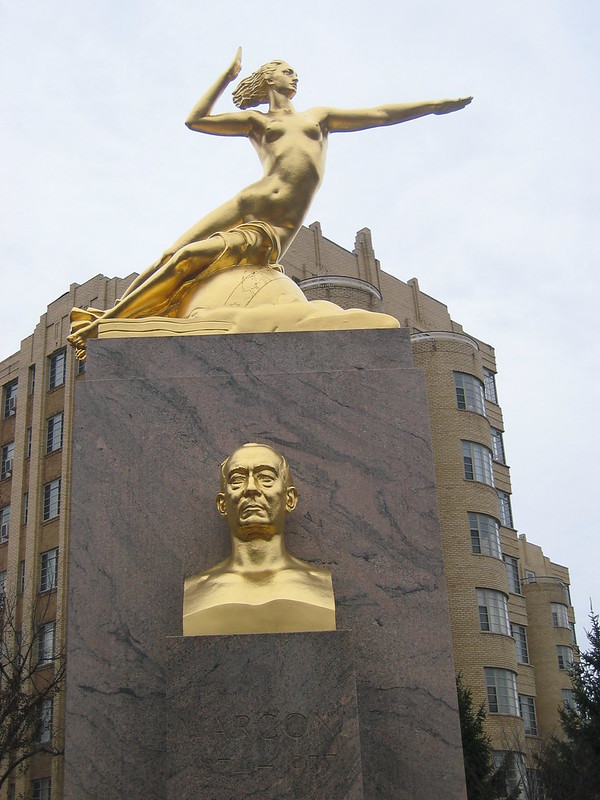
What is your favorite monument in DC? This is a monument for Marconi who lived from 1874-1937. You can find this monument off 16th Street and Park Road. I don’t know who Marcon is. I don’t know what he did. What I do know, is that he has the sweetest monument in our nation’s capitol. So what is your favorite monument in our nation’s capitol?

